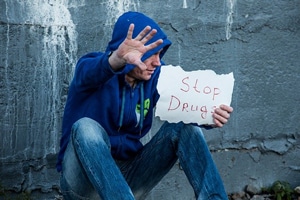
February 24, 2020
Law Enforcement And Drug Rehabilitation
By Michael D. Shaw
Law enforcement’s interest in addictive substances—in the United States—dates back to the 1870s, and was directed at opium use by Chinese immigrants. At the turn of the 20th century, attention was directed toward Black men in the South, and their cocaine abuse. A few years later, the focus was on marijuana, and Mexican immigrants and citizens of Mexican descent. Clearly, there has been a racial element involved in drug enforcement policy from the beginning.
Enforcement activities would skyrocket with Nixon’s 1971 War on Drugs. On its face, this War is closely related to another war—namely the one in Vietnam. As writer Adam Janos puts it:
“According to a 1971 report by the Department of Defense, 51 percent of the armed forces had smoked marijuana, 31 percent had used psychedelics, such as LSD, mescaline and psilocybin mushrooms, and an additional 28 percent had taken hard drugs, such as cocaine and heroin. But drug usage wasn’t just limited by what enlistees could illicitly buy on the black market. Their military command also heavily prescribed pills to the troops under the auspices of improving performance.”
Janos goes on to describe the draconian military policy that followed. One thousand G.I.s were arrested each week, and many sources of marijuana were eliminated. This scheme led to much increased use of heroin, and according to a Pentagon study, by 1973 up to 20 percent of soldiers were habitual heroin users. Full marks if you recognize the beginning of a pattern in drug enforcement. Virtually every policy only makes the situation worse.
Some years ago, an official with the Law Enforcement Action Partnership summarized it for me this way: Since 1971, we’ve spent $1 trillion, and have incarcerated more than 1 million people with the end result of purer drugs being more readily available. Still, this pithy statement doesn’t touch on the fruits of the War on Drugs.
While the serious drug issues in Vietnam were no doubt a factor in the launch of Nixon’s aggressive policy, there was more behind it. Nixon aide John D. Ehrlichman would reveal in a 1994 interview…
“The Nixon campaign in 1968, and the Nixon White House after that, had two enemies: the antiwar left and black people. We knew we couldn’t make it illegal to be either against the war or black, but by getting the public to associate the hippies with marijuana and blacks with heroin, and then criminalizing both heavily, we could disrupt those communities. We could arrest their leaders, raid their homes, break up their meetings, and vilify them night after night on the evening news. Did we know we were lying about the drugs? Of course we did.”
Lost in all of this is that Nixon’s War on Drugs included some provision for rehab and treatment—even if that was always overshadowed by zealous enforcement. Things are changing, though, as law enforcement is starting to embrace addiction treatment. Indeed, a sentiment often repeated these days is “We can’t arrest our way out of this problem.”
Which brings us to The Police Assisted Addiction and Recovery Initiative (PAARI), a community policing movement to create non-arrest pathways to treatment and recovery. This organization boasts an impressive number of police agency partners who are focusing on rehabilitation programs that divert people away from the criminal justice system, and increase trust between law enforcement and their communities.
At the heart of PAARI’s activities are its Recovery Corps Members—recovery coaches and program directors affiliated with police departments. Such activities are expanding around the country. This recent news story covering the Sterling Heights, MI police department’s efforts is typical of the PAARI-inspired approach.
Media coverage of this novel cooperative approach includes a recent development from Rochester, NY, and a heartwarming chronicle heard on NPR’s Weekend Edition. The NPR story featured a recovering addict telling her own story, and how she was helped by the Holyoke, MA police department’s Drug Addiction Recovery Team. Her life was saved by a dose of Narcan left with her by the team.
Nearly 50 years after the War on Drugs officially began, we might just have come up with a new, more effective, and far less traumatic strategy.
